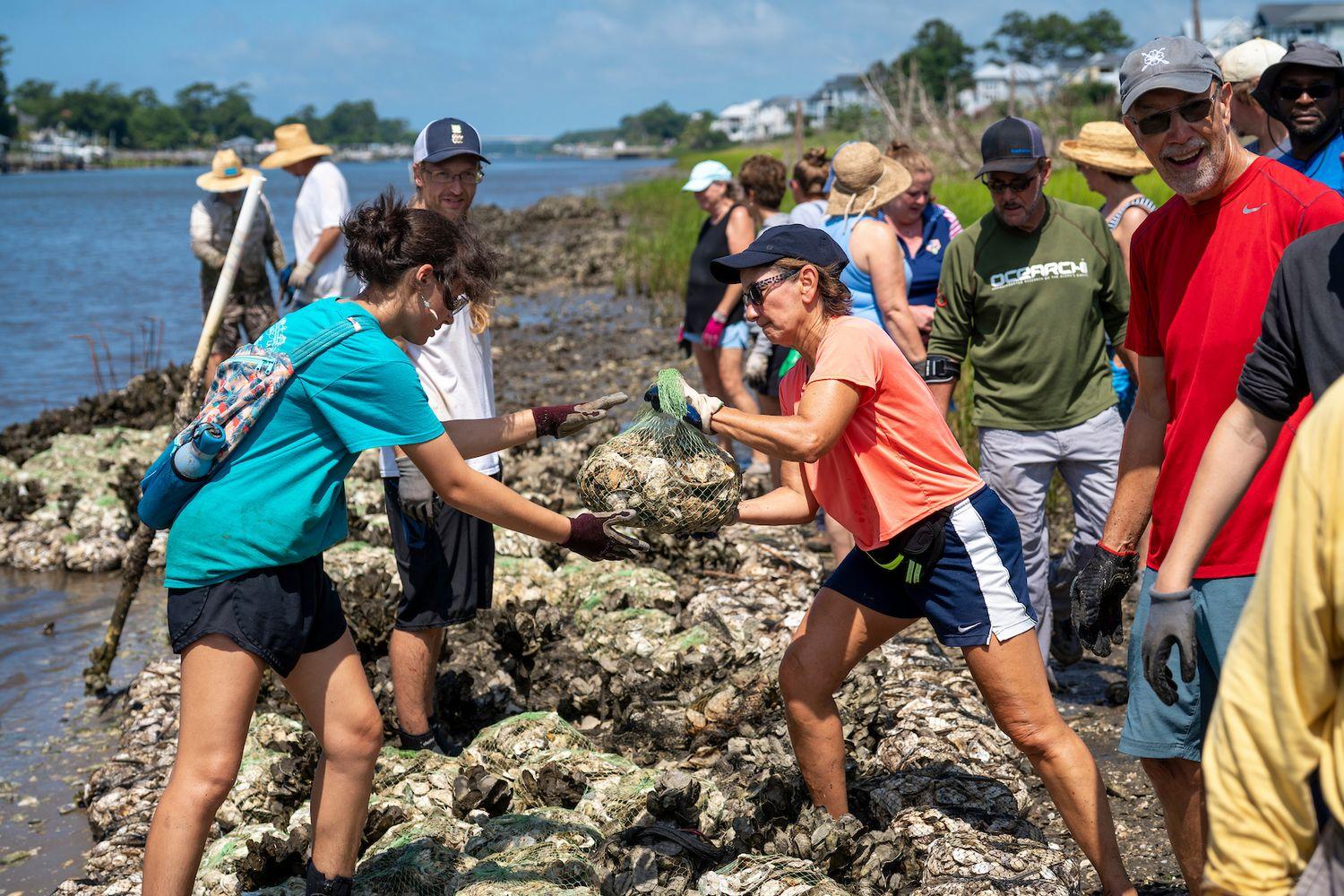UNCW’s Partnership with Town of St. James Flourishes

Photo: Jeff Janowski/UNCW
For the past 20 years, UNCW faculty, researchers, students and citizen scientists have been eagerly participating in stabilizing the Intracoastal Waterway shoreline at the Town of St. James.
The partnership between UNCW’s Department of Biology and Marine Biology and the Town of St. James began as a citizen scientist project. St. James resident and leader of the community project, J. Taylor Ryan learned of living shorelines for oyster reef restoration after attending a conservation seminar. He brought the concept to the town mayor.
After receiving approval for the project, Ryan reached out to research specialist Troy Alphin in the UNCW Benthic Ecology Lab who encouraged the idea, and a partnership was born.
“This is the 20th birthday of building this living shoreline. Every mayor and town council for the past 20 years has approved funding,” said Ryan. “We are a step ahead of many other communities in protecting our shoreline, and I’m very proud.”
Reef builds and grass plantings are planned according to low tides and are typically conducted in July and October. The first reef build used 1,500 bags of oyster shells which community volunteers filled in three hours. The most recent build included 850 bags of shells and planting of Spartina grass by more than 180 volunteers including faculty, students, town residents as well as their vacationing friends and family.
Through support from the Town of St. James, UNCW students regularly research and measure the impact of the coastal resilience project. This research has documented numerous species who now call the shoreline home, including oysters, crabs, gastropods, shrimp and nekton.
“Coastal resiliency is a core component of research at UNCW and the Center for Marine Science, and this project provides current data to inform sustainability efforts along the North Carolina coast and beyond,” Alphin said. “More importantly, by working on the town’s living shoreline, students gain valuable hands-on experience by planning events, collecting reef samples, and processing data from monitoring activities.”
By fostering strong community partnerships, the university strengthens its commitment to collaboration in addressing issues that impact the region. In 2022, the university recognized Alphin and The Town of St. James for Excellence in Community Engagement, a partnership that continues to flourish.
UNCW has also worked on similar shoreline projects in nearby Pender and Onslow Counties, and more recently formed a three-year partnership with Oak Island, North Carolina, to assess and make recommendations for protecting and restoring the town’s eroding marshlands.
This article has the following tags: CSE - College of Science & Engineering Research & Innovation UNCW News Homepage myUNCW Center for Marine Science


